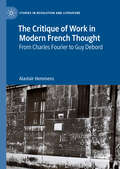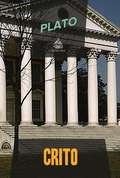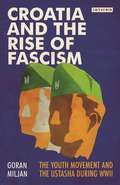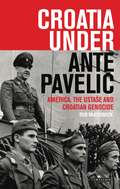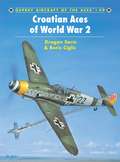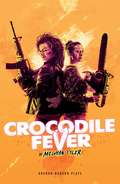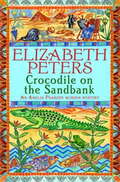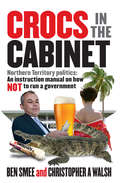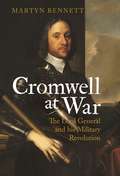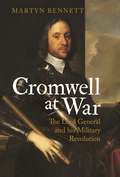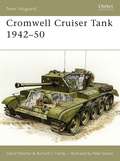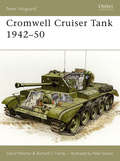- Table View
- List View
A Critique of Keynesian Economics
by Walter Allan'All of us need help in understanding Keynes's brilliant, but often opaque, contributions to theory and policy. These essays provide a scholarly, balanced yet provocative assessment and critique.' Sir Alan Walters This book represents, for the first time a collection of classic appraisals of Keynesian economics' impact on economic theory and policy that will be of use to all students of macroeconomics and the history of economic thought. Don Patinkin's assesses Keynes early life and focuses attention on Keynes's contribution to monetary economics. Axel Leijonhufvud takes the view that the Keynesian revolution began and stayed on the wrong track. Leland Yeager refutes the idea that Keynesian economics was responsible for the general prosperity in the industrialised world immediately after the Second World War. Karl Brunner is critical of Keynes's reliance on fiscal rather than monetary policy. Terence Hutchison defends Keynes, both against his critics and against Keynesians! Patrick Minford traces the roots of neoclassical economics, back to The General Theory. Stephen Littlechild offers an alternative to Keynesian economics by focusing attention on the Austrian school.
Critique Of The Power Of Judgment: (pdf) (The cambridge Edition Of The Works Of Immanuel Kant Ser.)
by Immanuel Kant Paul Guyer Eric Matthews Allen W. WoodThe Critique of the Power of Judgment (a more accurate rendition of what has hitherto been translated as the Critique of Judgment) is the third of Kant's great critiques following the Critique of Pure Reason and the Critique of Practical Reason. This translation of Kant's masterpiece follows the principles and high standards of all other volumes in The Cambridge Edition of the Works of Immanuel Kant. This volume, first published in 2000, includes: the indispensable first draft of Kant's introduction to the work; an English edition notes to the many differences between the first (1790) and second (1793) editions of the work; and relevant passages in Kant's anthropology lectures where he elaborated on his aesthetic views. All in all this edition offers the serious student of Kant a dramatically richer, more complete and more accurate translation.
The Critique of Psychology: From Kant to Postcolonial Theory (Library of the History of Psychological Theories)
by Thomas TeoClosely paralleling the history of psychology is the history of its critics, their theories, and their contributions. The Critique of Psychology is the first book to trace this alternate history, from a unique perspective that complements the many existing empirical, theoretical, and social histories of the field. Thomas Teo cogently synthesizes major historical and theoretical narratives to describe two centuries of challenges to—and the reactions of—the mainstream. Some of these critiques of content, methodology, relevance, and philosophical worldview have actually influenced and become integrated into the canon; others pose moral questions still under debate. All are accessibly presented so that readers may judge their value for themselves: - Kant’s critique of rational and empirical psychology at the end of the 18th century - The natural-scientific critique of philosophical psychology in the 19th century - The human-scientific critique of natural-scientific psychology - The Marxist traditions of critique - Feminist and postmodern critiques and the contemporary mainstream - Postcolonial critiques and the shift from cross-cultural to multicultural psychology This is not a book of critique for critique’s sake: Teo defines the field as a work in progress with goals that are evolving yet constant. In emphasizing ethical and political questions faced by psychology as a discipline, this visionary book points students, academics, and practitioners toward new possibilities for their shared future.
Critique of Pure Reason, Second Edition
by I. Kant Howard Caygill G. Banham N. Kemp SmithKant's Critique of Pure Reason is one of the most rewarding of all philosophical works. The text follows the second edition of 1787, with a translation of all first edition passages altered or omitted. For this reissue of Kemp Smith's classic 1929 edition, Gary Banham contributes a major new Bibliography of secondary sources on Kant.
Critique of Western Philosophy and Social Theory
by D. SprintzenThe "existential" drama at the heart of the modern world is the result of a truly cataclysmic transformation in our institutions and modes of belief. It rivals in scope and significance, if it does not surpass, the transformation occasioned by the "Scientific Revolution" of the sixteenth and seventeenth century. Few can still doubt - even if they do not yet appreciate - the comprehensive and global scope of this "Second Scientific Revolution." Our fundamental modes of thought and action, institutional structure, personal identity, economic development, and relation to nature, all require radical revision if human life on this planet (and beyond) is to survive and prosper. We are thus confronted with a world whose structures of meaning and corresponding institutional foundations are being undermined, thus presaging a revolutionary transformation. That transformation, however unclear at present, cannot fail to be radical and comprehensive. This work critically evaluates its nature, outlines the structures of an alternative world view and then develops the contours of the social and institutional order it suggests. It concludes with a discussion of practical strategies by which we may reasonably hope to meet the challenges confronting our civilization.
The Critique of Work in Modern French Thought: From Charles Fourier to Guy Debord (Studies in Revolution and Literature)
by Alastair HemmensWhat is work? Why do we do it? Since time immemorial the answer to these questions, from both the left and the right, has been that work is both a natural necessity and, barring exploitation, a social good. One might criticise its management, its compensation and who benefits from it the most, but never work itself, never work as such. In this book, Alastair Hemmens seeks to challenge these received ideas. Drawing on the new ‘critique-of-value’ school of Marxian critical theory, Hemmens demonstrates that capitalism and its final crisis cannot be properly understood except in terms of the historically specific and socially destructive character of labour. It is from this radical perspective that Hemmens turns to an innovative critical analysis of the rich history of radical French thinkers who, over the past two centuries, have challenged the labour form head on: from the utopian-socialist Charles Fourier, who called for the abolition of the separation between work and play, and Marx’s wayward son-in-law, Paul Lafargue, who demanded The Right to Laziness (1880), to the father of Surrealism, André Breton, who inaugurated a ‘war on work’, and, of course, the French Situationist, Guy Debord, author of the famous graffito, ‘never work’. Ultimately, Hemmens considers normative changes in attitudes to work since the 1960s and the future of anti-capitalist social movements today. This book will be a crucial point of reference for contemporary debates about labour and the anti-work tradition in France.
Critiques of Capital in Modern Britain and America: Transatlantic Exchanges 1800 to the Present Day
by M. Bevir F. TrentmannThis book is an innovative collection of essays by a new generation of British and American historians and political theorists. Moving beyond a conventional action/reaction view of capitalism and its critics, the volume explores how critical traditions and beliefs have helped to shape capitalism. Chapters follow diverse critiques in Britain and America and explore their Atlantic and imperial exchanges. The volume includes chapters on questions of law and property in the Victorian empire; traditions of land reform in nineteenth century America and Britain; the influence of American romanticism on British socialism; the role of Britain in American progressivism; American and British consumer protection; the evolution of trusteeship and ideas of cosmopolitan democracy; the 'third way' and narratives of globalization. The editors' introduction offers a critical historiographical survey and, by stepping beyond the dogmatic opposition between post-modernists and empiricists, provides a new research agenda for an integrated study of capitalism and its critics.
Crito
by PlatoIt depicts a conversation between Socrates and his wealthy friend Crito regarding justice (δικαιοσύνη), injustice (ἀδικία), and the appropriate response to injustice. Socrates thinks that injustice may not be answered with injustice, and refuses Crito's offer to finance his escape from prison. This dialogue contains an ancient statement of the social contract theory of government.
Cro-Magnon: How the Ice Age Gave Birth to the First Modern Humans
by Brian FaganA Los Angeles Times BestsellerNew York Times best-selling author Brian Fagan explores the world of the Cro-Magnons--the mysterious, little-known race, famous for its cave paintings, that survived the Ice Age and became the ancestors of today's humans.They survived by their wits in a snowbound world, hunting, and sometimes being hunted by, animals many times their size. By flickering firelight, they drew bison, deer, and mammoths on cavern walls- vibrant images that seize our imaginations after thirty thousand years. They are known to archaeologists as the Cro-Magnons-but who were they? Simply put, these people were among the first anatomically modern humans. For millennia, their hunter-gatherer culture flourished in small pockets across Ice Age Europe, the distant forerunner to the civilization we live in now.Bestselling author Brian Fagan brings these early humans out of the deep freeze with his trademark mix of erudition, cutting-edge science, and vivid storytelling. Cro-Magnon reveals human society in its infancy, facing enormous environmental challenges from glaciers, predators, and a rival species of humans-the Neanderthals. Cro-Magnon captures the adaptability that has made humans an unmatched success as a species. Living on a frozen continent with only crude tools, Ice Age humans survived and thrived. In these pages, we meet our most remarkable ancestors.
Croatia and the Rise of Fascism: The Youth Movement and the Ustasha During WWII (Library Of World War Two Studies #2)
by Goran MiljanDuring World War II, Croatia became a fascist state under the control of the Ustasha Movement - allied with Nazi Germany and Fascist Italy. Here, Goran Miljan examines and analyzes for the first time the ideology, practices, and international connections of the Ustasha Youth organization. The Ustasha Youth was an all-embracing fascist youth organization, established in July 1941 by the `Independent State of Croatia' with the goal of reeducating young people in the model of an ideal `new' Croat. This youth organization attempted to set in motion an all-embracing, totalitarian national revolution which in reality consisted of specific interconnected, mutually dependent practices: prosecution, oppression, mass murder, and the Holocaust - all of which were officially legalized within a month of the regime's accession to power. To this end education, sport, manual work and camping took place in specially established Ustasha Youth Schools. In order to justify their radical policies of youth reeducation, the Ustasha Youth, besides emphasizing national character and the importance of cultural and national purity, also engaged in transnational activities and exchanges, especially with the Hlinkova mladez [Hlinka Youth] of the Slovak Republic. Both youth organizations were closely modelled after the youth organizations in Nazi Germany and Fascist Italy. This is a little studied part of the history of World War II and of Fascism, and will be essential reading for scholars of Central Europe and the Holocaust.
Croatia Under Ante Pavelic: America, the Ustase and Croatian Genocide in World War II (International Library of Twentieth Century History)
by Robert B. McCormickAnte Pavelic was the leader of the fascist party of Croatia (the Ustaše), who, on Adolf Hitler's instruction, became the leader of Croatia after the Nazi invasion of 1941. Paveli? was an extreme Croatian nationalist who believed that the Serbian people were an inferior race - he would preside over a genocide that ultimately killed an estimated 390,000 Serbs during World War II. Croatia under Ante Paveli? provides the full history of this period, with a special focus on the United States' role in the post-war settlement. Drawing on previously unpublished documents, Robert McCormick argues that President Harry S. Truman's Cold War priorities meant that Paveli? was never made to answer for his crimes. Today, the Ustaše remains difficult legacy within Croatian society, partly as a result of Paveli?' political life in exile in South America. This is a new account of US foreign policy towards one of the Second World War's most brutal dictators and is an essential contribution to Croatian war-time history.
Croatia Under Ante Pavelic: America, the Ustase and Croatian Genocide in World War II
by Robert B. McCormickAnte Pavelic was the leader of the fascist party of Croatia (the Ustaše), who, on Adolf Hitler's instruction, became the leader of Croatia after the Nazi invasion of 1941. Paveli? was an extreme Croatian nationalist who believed that the Serbian people were an inferior race - he would preside over a genocide that ultimately killed an estimated 390,000 Serbs during World War II. Croatia under Ante Paveli? provides the full history of this period, with a special focus on the United States' role in the post-war settlement. Drawing on previously unpublished documents, Robert McCormick argues that President Harry S. Truman's Cold War priorities meant that Paveli? was never made to answer for his crimes. Today, the Ustaše remains difficult legacy within Croatian society, partly as a result of Paveli?' political life in exile in South America. This is a new account of US foreign policy towards one of the Second World War's most brutal dictators and is an essential contribution to Croatian war-time history.
Croatian Aces of World War 2 (Aircraft of the Aces)
by John Weal Boris Ciglic Dragan SavicInitially flying Italian-supplied Fiat G.50s, the Croat forces suffered heavy losses during 1942 whilst flying alongside JG 52 in the southern sector of the Russian front. Despite this, a significant number of kills fell to future aces such as Cvitan Galic and Mato Dubovak during this time, and when the units re-equipped with Bf 109G-10s in 1943, battle-seasoned Croat pilots started to rack up impressive scores. This book reveals how, by 1944, Croat air groups were defending Yugoslavia from British and American air raids, and in the final months of the war a handful of surviving pilots fought on until final defeat in May 1945.
Croatian Aces of World War 2 (Aircraft of the Aces #49)
by John Weal Boris Ciglic Dragan SavicInitially flying Italian-supplied Fiat G.50s, the Croat forces suffered heavy losses during 1942 whilst flying alongside JG 52 in the southern sector of the Russian front. Despite this, a significant number of kills fell to future aces such as Cvitan Galic and Mato Dubovak during this time, and when the units re-equipped with Bf 109G-10s in 1943, battle-seasoned Croat pilots started to rack up impressive scores. This book reveals how, by 1944, Croat air groups were defending Yugoslavia from British and American air raids, and in the final months of the war a handful of surviving pilots fought on until final defeat in May 1945.
Crocodile Fever (Oberon Modern Plays)
by Meghan TylerNorthern Ireland, 1989. A farmhouse window smashes, and rebellious Fianna Devlin crashes back into the life of her pious sister Alannah. Together for the first time in years, when they're forced to confront their tyrannical father’s hideous legacy, all hell breaks loose. Fuelled by Taytos, gin, 80s tunes and a chainsaw, Meghan Tyler’s surreal Crocodile Fever is a grotesque black comedy celebrating sisterhood whilst reminding us that the pressure cooker of The Troubles is closer than we imagine.
Crocodile on the Sandbank: Miss Marple crossed with Indiana Jones! (Amelia Peabody #No. 1)
by Elizabeth PetersAmelia Peabody is Elizabeth Peters' most brilliant and best-loved creation, a thoroughly Victorian feminist who takes the stuffy world of archaeology by storm with her shocking men's pants and no-nonsense attitude!In this first adventure, our headstrong heroine decides to use her substantial inheritance to see the world. On her travels, she rescues a gentlewoman in distress - Evelyn Barton-Forbes - and the two become friends. The two companions continue to Egypt where they face mysteries, mummies and the redoubtable Radcliffe Emerson, an outspoken archaeologist, who doesn't need women to help him solve mysteries -- at least that's what he thinks!'Think Miss Marple with early feminist gloss crossed with Indiana Jones... Dastardly deeds, whirlwind romances, curious mummies and all the fun and intrigue of Egyptian excavations, with a heroine who wields a sturdy parasol rather than a magnum. Accomplished entertainment.' Guardian
Crocs in the Cabinet: Northern Territory politics – an instruction manual on how NOT to run a government
by Ben Smee Chistopher A WalshGoings-on in Northern Territory politics from 2012-2016 may read like satire, but it is all true. These are stories you couldn't make up. This book is an instruction manual on how NOT to run a government.In the Top End, politics is not a numbers game, it is a blood sport.In comparison to Rudd, Gillard, Abbott and Turnbull, the goings-on in the Northern Territory parliament are like watching a troop of clowns throwing knives into each other's backs.CROCS IN THE CABINET is partly a serious political book, partly a riotous look at the characters, the scandals and the incompetence of Northern Territory politics. It will make you laugh, cry, wince and shake your head as you read of:- a minister with a hostess club bill- a masturbating minister and the lewd videos he sent someone other than his wife- why a minister shouted 'we are in love' on the floor of the parliament- how the Chief Minister stared down a coup- how an MP forced the evacuation of a hotel- why an MP went fishing instead of dealing with leadership matters- exactly how bonkers the NT parliament really is.Written by two of the NT NEWS's best journalists, Walkley Award-winning Ben Smee and award-winning Christopher A. Walsh, this is FEAR AND LOATHING ON THE CAMPAIGN TRAIL meets FAWLTY TOWERS.
Cromwell against the Scots: Last Anglo-Scottish War, 1650-52
by John D. GraingerAfter an introduction establishing Cromwell's war against the Scots from July 1650 to May 1652, this book discusses Charles' landing and Fairfax's resignation as commander-in-chief of the English Republican Army, both events occurred on the same day. It then addresses the causes of the war, Charles II's landing in Northern Scotland from the Continent. The story continues chronologically, from Cromwell's invasion of Scotland, through the Battle of Dunbar, and the slow establishment of the king's power over the Scottish government. The end came with the fall of the last of the Scottish castles, Dunnottar, to English conquest. The Scots enjoyed a distinct military recovery after the Dunbar defeat, but their aims and those of the king were always at cross purposes: the king was intent on the invasion of England, the Scots on resistance to English conquest. Finally, Cromwell's manoeuvres in the summer of 1651, and the English victory at Inverkeithing, allowed the king to invade England. This ended in another Scots defeat at Worcester. The removal of the Scots Army to England meanwhile allowed the English under Monck to complete their conquest of Scotland.
Cromwell and Scotland: Conquest and Religion 1650-1660
by R. Scott SpurlockThis book examines the role of religion in the story of Oliver Cromwell’s invasion and subsequent occupation of Scotland. Analysis of the printed propaganda produced by the Scots and the English makes it clear that both nations defined their positions, and gained support, in overtly religious terms. During their decade-long occupation of Scotland, the English Commonwealth actively sought to undermine Scottish Presbyterianism. Public disputes, public preaching and Scotland’s printing presses were all used to weaken the influence of the Kirk, while eager English soldiers and chaplains tried to convert Scots to their own particular religious sects.Policies of the Scottish Kirk and State in the previous decade had ostracised a significant portion of the Scottish people. As a result, English missionaries found some Scots eager to hear alternative forms of Protestantism preached. Dispelling myths that the sectarian presence had little impact on Scottish religion, this book describes the endeavours of the Independents, Baptists and Quakers to gain converts, with varying degrees of success.
Cromwell and the Interregnum: The Essential Readings (Blackwell Essential Readings in History)
by David Lee SmithThis book brings together eight of the most influential recent articles on Oliver Cromwell and the Interregnum. Brings together seminal articles on Oliver Cromwell and the Interregnum. Illuminates the personality of Cromwell and his achievements. Includes treatments of Ireland and Scotland alongside discussion of England. Editorial material introduces students to the historiographical issues.
Cromwell at War: The Lord General and his Military Revolution
by Martyn BennettOliver Cromwell was arguably the most significant political figure in the early modern history of the British Isles. Yet he was also a military leader, with significant battlefield victories to his credit. Martyn Bennett here provides the first military biography of Cromwell in the context of the seventeenth century Military Revolution. After commanding a small troop in 1643 and, without prior military experience, Cromwell rose to lead the cavalry regiments of the Eastern Association Army and the New Model Army to final victory at Worcester in 1651 and sealed the victory of the Parliamentary forces in Ireland and Scotland, becoming Lord General in 1650. Martyn Bennett analyses Cromwell's military talents and generalship, in addition to his well-attested powerful and even brutal discipline and religious fervour. He examines the controversial Irish campaigns as well as modern accusations of genocide. In providing new perspectives on Cromwell's military career, Bennett adds to our understanding of England's only non-royal head of state.
Cromwell at War: The Lord General and his Military Revolution
by Martyn BennettMartyn Bennett here provides the first military biography of Cromwell in the context of the seventeenth century Military Revolution. After commanding a small troop in 1643 and, without prior military experience, Cromwell rose to lead the cavalry regiments of the Eastern Association Army and the New Model Army to final victory at Worcester in 1651 and sealed the victory of the Parliamentary forces in Ireland and Scotland, becoming Lord General in 1650. Martyn Bennett analyses Cromwell's military talents and generalship, in addition to his well-attested powerful and even brutal discipline and religious fervour. He examines the controversial Irish campaigns as well as modern accusations of genocide. In providing new perspectives on Cromwell's military career, Bennett adds to our understanding of England's only non-royal head of state.
Cromwell Cruiser Tank 1942–50 (New Vanguard)
by Peter Sarson David Fletcher Richard C HarleyFor most of World War II, British tank development remained faithful to the design philosophy inaugurated during World War I. Experiences in North Africa highlighted flaws in this basic design, however, and the General Staff identified the need for a new heavy cruiser that could combine speed and manoeuvrability with increased armour and armament. The Cromwell Cruiser tank was designed as a result and soon proved itself one of the fastest and most successful tanks deployed by the Allies during World War II. This book details the design and development of the Cromwell and its many variants, from its introduction at D-Day, through its many successes in the final year of World War II and beyond.
Cromwell Cruiser Tank 1942–50 (New Vanguard #104)
by Peter Sarson David Fletcher Richard C HarleyFor most of World War II, British tank development remained faithful to the design philosophy inaugurated during World War I. Experiences in North Africa highlighted flaws in this basic design, however, and the General Staff identified the need for a new heavy cruiser that could combine speed and manoeuvrability with increased armour and armament. The Cromwell Cruiser tank was designed as a result and soon proved itself one of the fastest and most successful tanks deployed by the Allies during World War II. This book details the design and development of the Cromwell and its many variants, from its introduction at D-Day, through its many successes in the final year of World War II and beyond.





